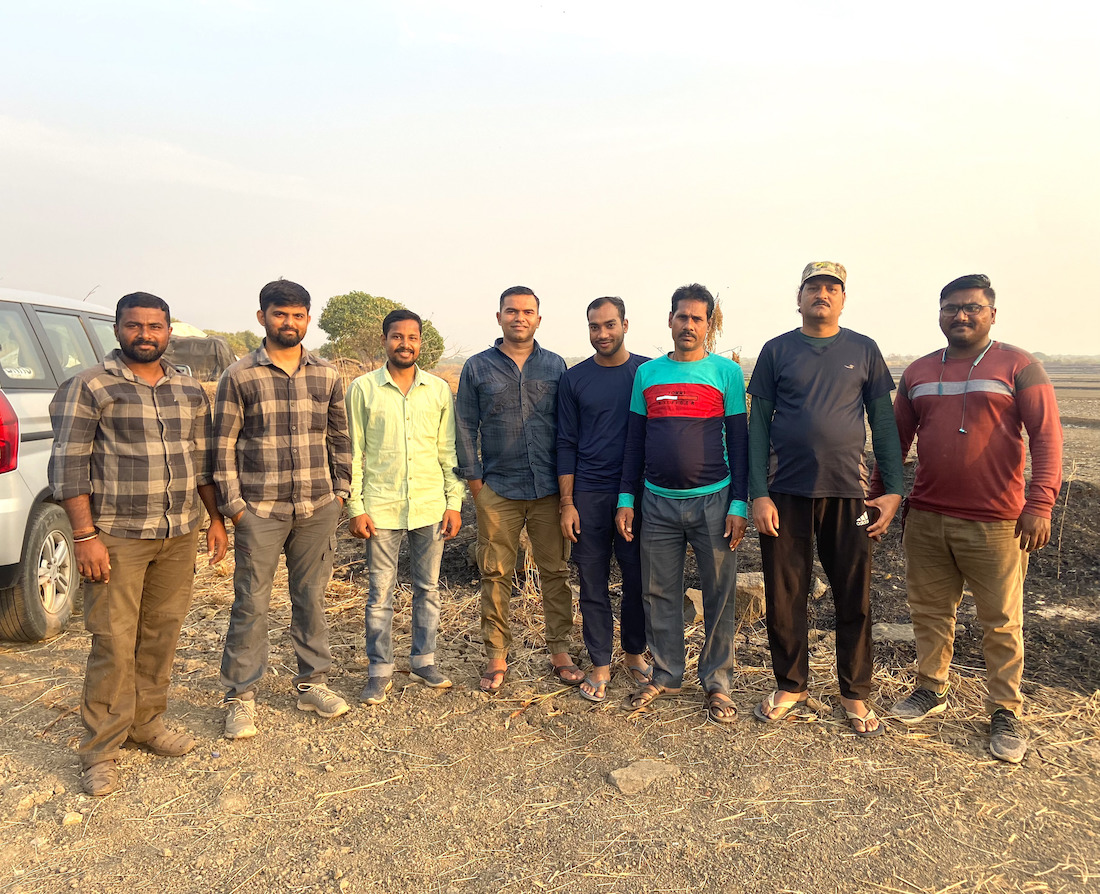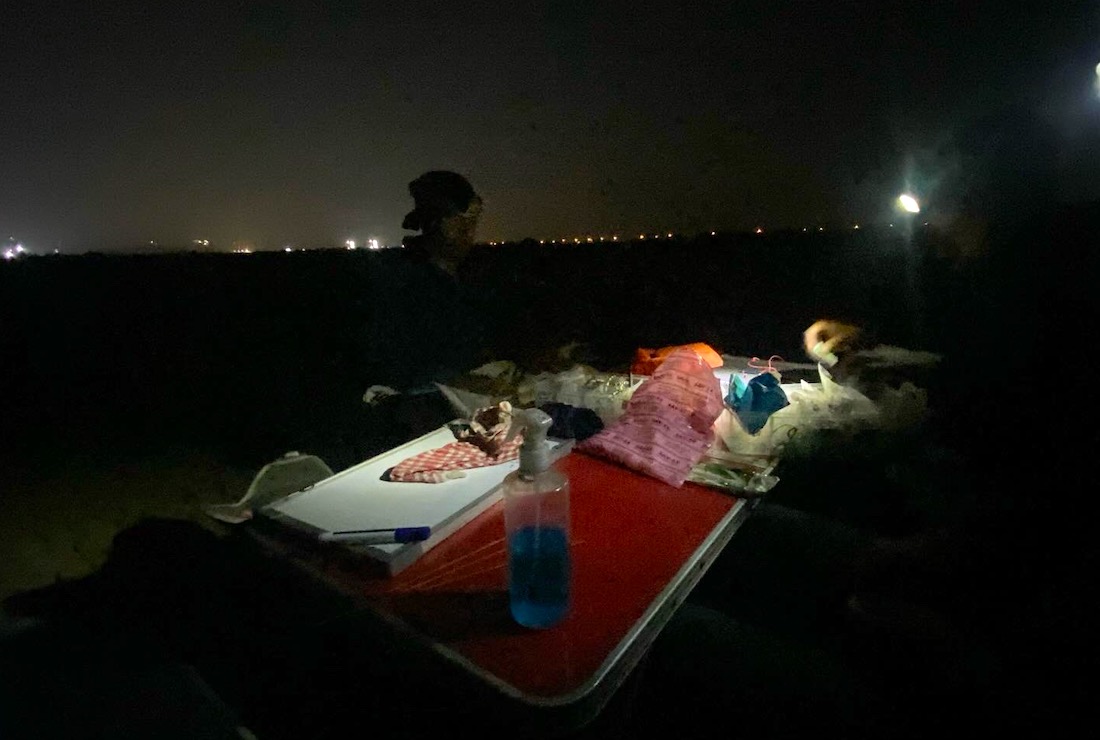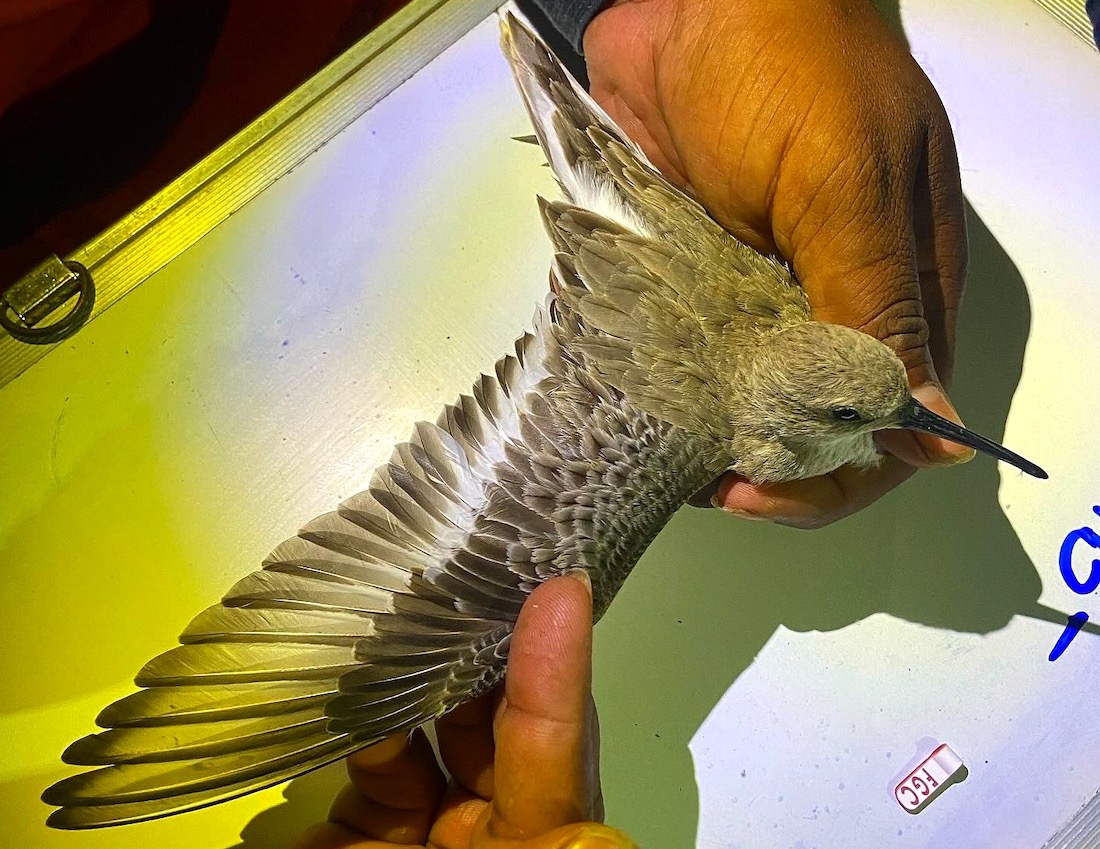There before my eyes were the sprawling salt pans of Mankhurd. The sun was setting on this raw, unkempt, yet beautiful landscape, and it all appeared very magical. A very secluded, almost forgotten part of Mumbai, these salt pans serve as a vital wetland habitat, one of the last refuges of migratory birds arriving in the city in winter, and also act as potential buffers against flooding. However, with the urban sprawl gnawing into them with each passing day, their future existence is at stake.

I was accompanying a team of researchers and trappers from the Bombay Natural History Society (BNHS) who were there to ring the birds, mostly migratory in nature, to gather valuable data on wetland bird migration and other studies. The birds were to arrive in a couple of hours, driven away by the high tide of the Thane Creek, to the salt pans here, where the water levels were shallower. The researchers were to stay up late into the night, braving the cold, darkness, and the constantly buzzing mosquitos, to perform this extremely vital experiment to ensure a secure future for the migratory birds, Mumbai’s guests from faraway lands.

As the researchers set up their temporary laboratory on a patch of dry ground in the salt pans with foldable tables and chairs and tools and equipment laid out on them, the trappers disappeared into the darkness to set up nets in the water in the submerged areas of the pan to trap the birds. Meanwhile, I took the liberty of learning about the ringing experiment before the researchers got super busy with their birds.
Ringing, I understood, is a scientific method where birds, trapped and caught, are fitted with small metal rings with inscribed codes around one of their legs. Vital parameters of the bird, like age, sex, weight, wing and beak length, etc., are also recorded. The birds are then set free, with the ring acting as an identity tag for them the next time they are detected anywhere across the globe.
“Ringing helps us answer important questions related to migratory birds that help us design conservation strategies and influence policy-making to protect them and their habitats,” mentioned Mrugank Prabhu, the lead scientist of the BNHS team conducting the ringing experiments at the Mankhurd salt pans.
“We get to know about the movement patterns of these birds. Ringing helps us answer vital questions like where do they come from, what are their habitat choices, do they show site fidelity, what is their population trend, whether the same individuals come here each year, whether these birds use Mumbai’s wetlands as their wintering grounds or only as stopover sites, etc.,” he continued.

As we conversed, the trappers emerged from the darkness with the birds (a random collection of small to medium-sized waders like (Little stint, Common Redshank, Terek Sandpiper, Curlew Sandpiper, Dunlin etc.) secured inside spacious cages specially designed for the purpose keeping bird safety in mind. The researchers could waste no time now as they had to free the birds as quickly as possible. So, they grabbed their positions in their under-the-open-sky laboratory and started ringing the birds. I watched, fascinated, as the scientists brought one bird after another out of the cages and into their hands to fit them with rings, measure, weigh, and photograph them keeping bird safety at topmost priority.
The birds I had always watched through binoculars or cameras were now right before my eyes. I was also surprised at how decently they behaved in the hands of the researchers, given that they had just been deprived of their freedom! I believe it was the gentle yet firm grip of the seasoned researchers that guaranteed them that they were in safe hands. The best part was watching the researchers gently lower the birds onto the ground and the birds soaring up and disappearing into the darkness with their brand new ornaments, the rings, as a gift from Mumbai.

The experiment went on for several hours. It was all dark except for the city lights on the distant horizon. No soul other than us, the birds, and the howling jackals in the distance existed. But it was not just the peaceful atmosphere of the salt pans that brought the birds here. They need more than that to feel secure.
The birds arrive in the salt pans of Mankhurd when the tide is high in Thane Creek, an inlet of the Arabian Sea. The high water levels submerge the mudflats of the creek where the birds feed, forcing them to retreat to a place with shallower water levels. The salt pans also become ideal resting places for the birds, like being open and without much vegetation, which otherwise provides perching spots for predatory birds. The water channels dug by the salt pan workers to divert water from the creek to the salt pans also serve as moats for the birds, fortifying their stay in the salt pans and preventing land predators like jackals from reaching them.
Once at the pans, the birds spend their time preening, roosting, and also feeding. Migratory birds become voracious feeders in their wintering grounds, especially as the time to fly back to their breeding grounds approaches. Their primary aim is to gain weight to sustain the long flight back to their breeding grounds and also for successful breeding.
It was already midnight when the team gradually started winding up for the day. Nearly 200 birds had been ringed, including many migratory species from distant lands like the Tibetan Plateau and Siberia. The data they had collected would be fed into an online database that scientists across the world can use to access vital information about migratory birds. The team’s work was, however, hardly done. They would come again the next day and then again and again. The ringing experiments start post-monsoon, pick up pace from late September, and continue till around the end of April, the period between which migratory species arrive, stay and prepare for the return journey from Mumbai to their breeding grounds.

As we walked back to the vehicle, I had only one question. Given the rapidly urbanising city that enveloped the salt pans of Mankhurd and other such locations where the birds seek refuge at high tide like TS Chanakya and the Bhandup Pumping Station, how long was it before the birds were left with no safe place to go during high tide?
“With land prices skyrocketing in Mumbai, these high-tide roost sites of the migratory birds are under huge threat. There is a high possibility of such wetlands being reclaimed for construction in the near future. Over 90% of such sites in the city have already been lost, and whatever remains is not protected,” Mrugank answered.
Mrugank and team are thus also searching for potential new habitats in the city that can host birds at high tide if the existing sites get engulfed by the growing city. If such sites disappear in totality, Mumbai will lose its charming feathered winter guests adversely impacting the population of some of the wader species of global concern, the ecosystem services they provide and the touch of spirited beauty they add to the city’s otherwise expanding concrete landscape.


Very interesting to read, thanks Oishimaya!